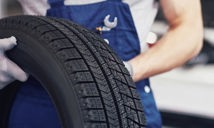Shopping for winter tires is a lot like shopping for shampoo: there are a daunting number of brands and options, each comes at a different price point, and each uses a proprietary blend of features, formulations, and attributes to deliver an expected result. For shampoo, it’s lustrous and easily manageable hair, but when we’re talking about winter tires, it’s grip, traction, and confidence across the gamut of winter driving surfaces and situations.
If you haven’t bought a set of winter tires in some time or if this season will be your first purchasing a set, you might be confused with all the terms you’ll come across, but we’re going to demystify the main terminologies you’ll encounter when shopping for, installing, and servicing winter tires, what they mean, and why they’re important.
By the end of this page, you’ll be fully up to speed on all of the shop talk that goes into selecting, installing, and caring for your new set of winter tires. It’s all about helping you feel more confident when making the best purchase decision for yourself and experiencing the longest and most trouble-free life possible from your tires.
All-Season Tires vs All-Weather Tires vs Winter Tires
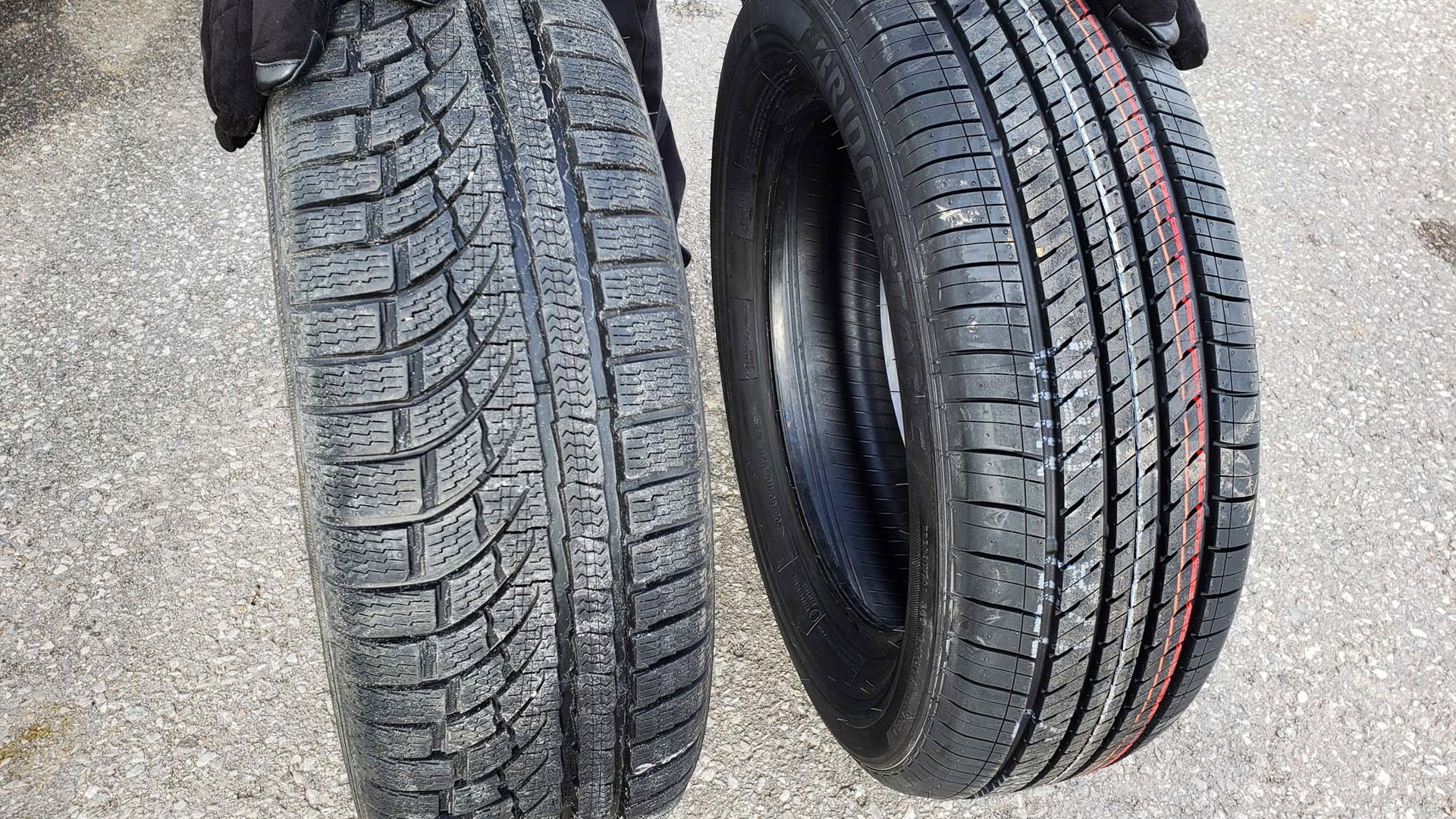 An all-weather tire typically has a split tread pattern (left). Also note the sipes (small cuts designed to wick away water and increase traction) in the tread blocks compared to the all-season tire (right).
An all-weather tire typically has a split tread pattern (left). Also note the sipes (small cuts designed to wick away water and increase traction) in the tread blocks compared to the all-season tire (right).
When you shop for shampoo, you’ll find various dedicated shampoos, detanglers, and conditioners that work on their own, as well as various 2-in-1 and 3-in-1 products.
When you shop for winter tires, it’s a similar setup.
All-season tires are like a 3-in-1 shampoo. In the same way that bottle of Head and Shoulders contains a shampoo, conditioner, and dandruff protection, all-season tires are designed to work in a wide range of conditions.
The goal of a 2-in-1 or 3-in-1 product is convenience and time saving. With shampoo, you only need one bottle, not three, which saves you time at the store and in the shower. With tires, running a single all-season tire all year round saves you time and space.
In the harsh winter conditions faced by most Canadians, however, all-season tires aren’t good enough. They’re not designed or intended for use in severe winter weather, which is the reality across most of our country when the temperature drops.
Enter the all-weather tire. This is another do-it-all option: it’s like an all-season tire with some added winter capability. An all-weather tire might be all you need on your car or crossover if you live in an area where winter is typically mild and where snow and ice are rare. In the winter, an all-weather tire is better than an all-season, but it’s still no substitute for the real thing.
Dedicated Winter Tires
If you drive in a climate where temperatures stay below 7 degrees Celsius in the wintertime and you regularly encounter snow, ice, freezing rain, and slush, a dedicated winter tire is your best choice.
Winter tires are like straight-up shampoo, which has a single job instead of three so it does that one job very well. Winter tires are designed specifically for use in winter conditions to maximize traction and shorten braking distances in the cold and snow.
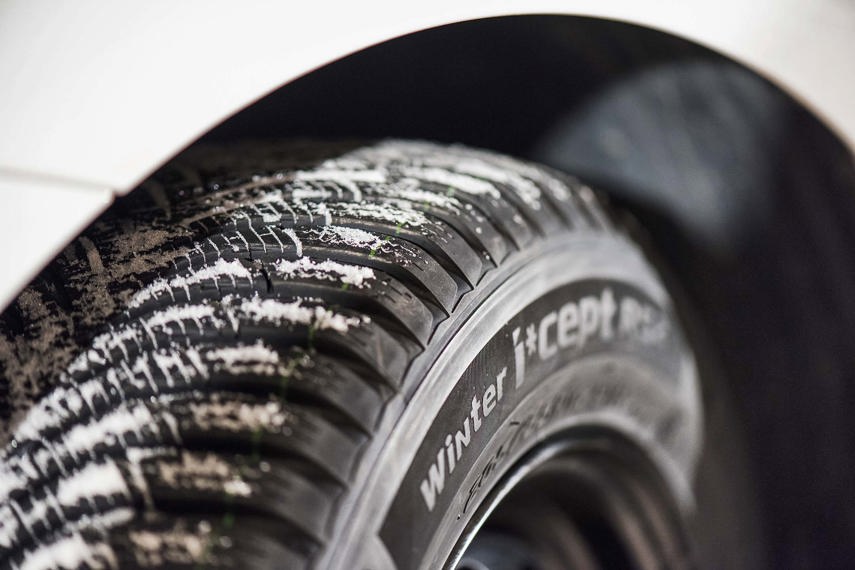
Though dedicated winter tires may be overkill in certain climates, many Canadians prefer the added confidence and performance they offer.
While a 3-in-1 alternative may be appealing to some, the best tires for severe winter conditions are dedicated winters, not a multi-purpose solution.
Snow Tires
Today, the term “snow tires” is obsolete and some people use the term interchangeably with “winter tires,” but they’re not exactly the same thing. Decades ago, snow tires were marketed for use on snow and ice, so giving them that name made it easy for shoppers to understand their purpose.
Today, we use the term “winter tires” instead. That’s because winter tires nowadays are designed for all winter conditions, not just snow and ice.
Even on winter days when roads are dry, a winter tire helps improve the safety and control of your car or truck thanks to special rubber compounds that stay flexible in the cold, unlike the rubber used for all-season tires, which becomes stiff and brittle in extreme cold, resulting in less traction.
To summarize, winter tires are the best tires for your car in winter, regardless of whether or not there’s snow on the road.
If you’re searching the web for some of the best tire options for the upcoming winter season, using the term “winter tires” instead of “snow tires” will likely lead you to more high-quality results.
Three-Peak Mountain Snowflake (3PMSF)
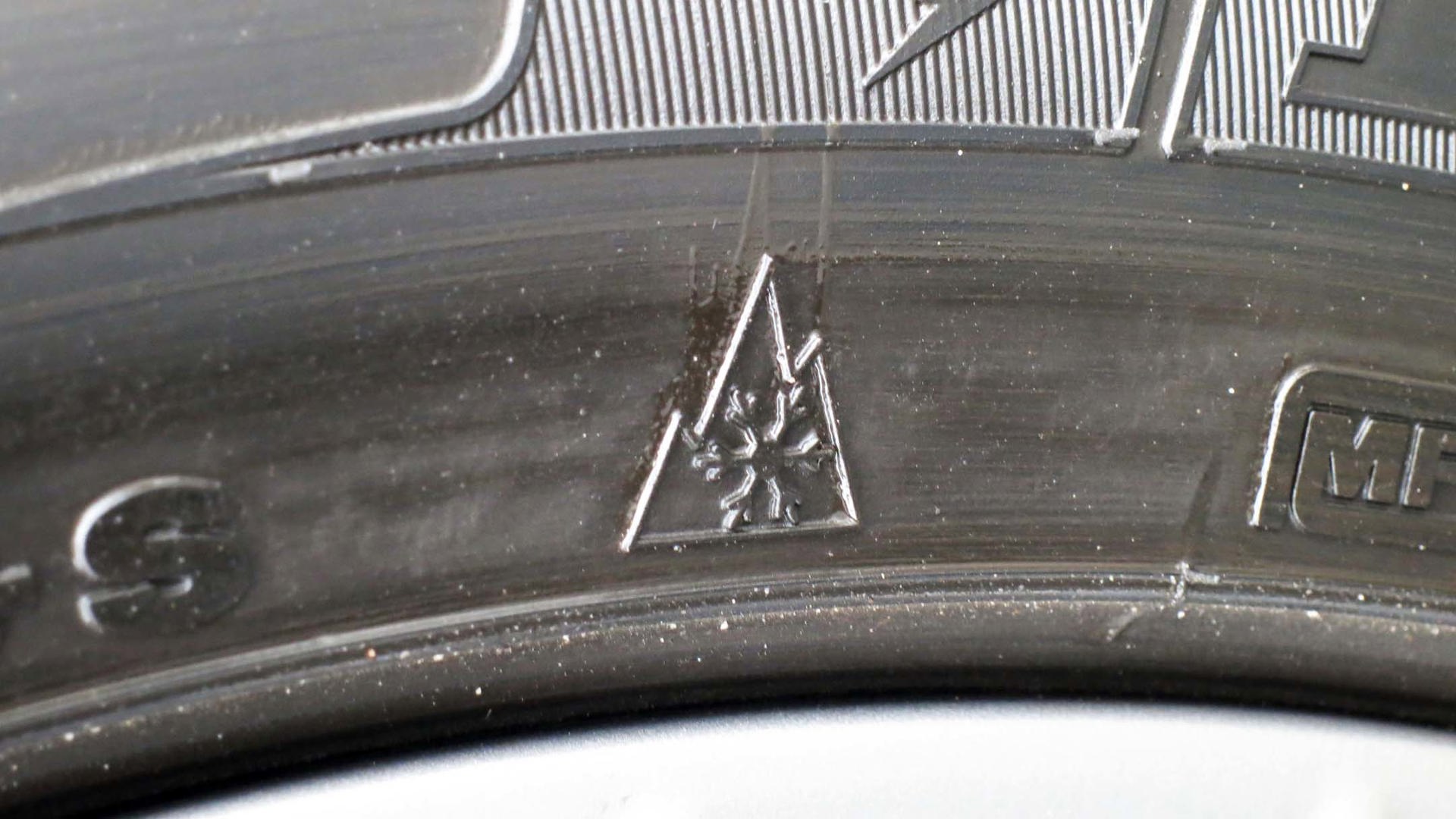
More and more pickup truck and SUV drivers are choosing to run dedicated winter tires in recent years, and the tire industry has responded with an increasing number of dedicated winter tire options to meet their needs.
Still, many truck and SUV drivers prefer to run a single tire all year round. Often, vehicles like these are equipped with an all-terrain or off-road capable tire, generally offering a more aggressive tread and construction than a typical all-season tire.
To these more specialized off-road and all-terrain tires, manufacturers may add the 3PMSF designation, identified by a small snowflake and mountain icon on the tire sidewall.
In the same way an all-weather tire for your Camry or Civic has added wintertime capability versus an all-season tire, a 3PMSF-rated all-terrain tire has added wintertime capability versus a standard all-terrain tire. Neither the all-weather tire nor the 3PMSF-designated all-terrain tire is a dedicated winter tire, though both deliver elevated performance on winter surfaces and at cold temperatures.
Just keep in mind that that elevated performance may be quite minimal. In fact, to earn the 3PMSF designation, an all-terrain tire simply needs to achieve a 10 per cent or better improvement to traction in the snow versus a tire without it.
“Tires marked with the three-peak mountain snowflake, also known as the severe service emblem, should provide better performance on snow than a tire with the M+S rating,” says Steve Bourassa, Director of Products at Nokian Tires. “However, the certification process does not require testing on ice, nor does it measure braking and turning on snow. It’s important to note that not all tires with the emblem are created equal.”
Translation? A 3PMSF-rated all-terrain tire can be expected to deliver a minimal performance improvement on snow and ice, though in severe winter driving, it shouldn’t be considered a replacement for a dedicated winter tire.
Silica Compound
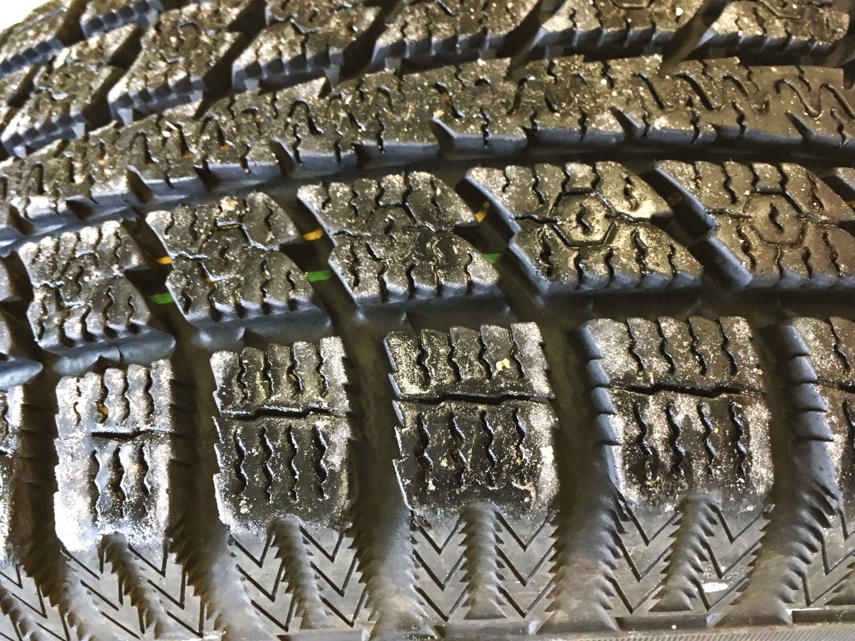
When you’re at the beach, you’re surrounded by silica: it’s one of the main ingredients in sand.
Tire manufacturers have been using silica-enhanced rubber compounds for years, as the addition of silica to the rubber compound allows chemical engineers to manipulate the relationship between a tire’s stiffness, rolling resistance (energy efficiency), and grip.
Use of silica rubber compounds gives engineers a higher degree of flexibility when comes to fine-tuning the various attributes of their tires. Before silica, making tires grippier meant making them softer, but softer tires wear out more quickly and are less fuel efficient. Adding silica to the mix improves the grip of the tire at the compound level, without the need to make the tires softer and compromise efficiency or lifespan.
When you encounter a tire with a silica compound, that tire is built with silica in its rubber to give you more of what you want: tread life, fuel efficiency, and traction.
Alignment
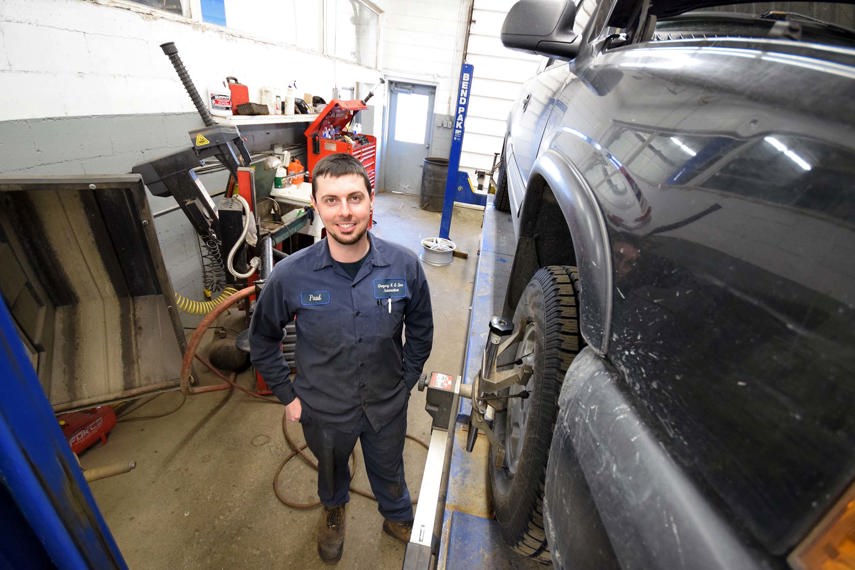
An alignment is a service performed on your vehicle by a technician when required. It’s not unlike a human going to a chiropractor.
At the chiropractor, a trained expert makes adjustments to your bones and joints to make sure everything is arranged and situated optimally for improved health. When your car gets an alignment, a technician makes similar adjustments and corrections to the position of various parts on your car that determine the angle with which its wheels and tires engage the road.
Your vehicle leaves the factory with its alignment precisely set to ensure optimal handling, efficiency, and tire wear properties. Over time, this alignment gets knocked out of whack and the factory-set angles of steering and suspension parts are compromised.
Humans may get a sore back or joints when their alignment goes out of whack, while our vehicles suffer accelerated tire wear, decreased handling, and increased fuel consumption.
After an alignment, your vehicle’s tires will engage the road as intended, reducing wear, improving mileage and optimizing handling.
Alignments are done on an as-needed basis, and most tire shops can quickly assess your vehicle’s alignment and perform the required adjustments. Consider having your vehicle’s alignment checked when you put your winter tires on. If an alignment is required, it’ll help your winter tires last even longer and you’ll enjoy added control and peace of mind.
Tire Rotation
A tire rotation is another service performed on your vehicle by a technician when required. Tire rotations are quick and painless: a technician simply removes your tires and wheels, moves each to a different position on the car, and reinstalls them.
Tire rotations are required because each tire on your vehicle will wear slightly differently than the rest because of vehicle weight balance, vehicle loading, and various other factors. A regular tire rotation ensures each tire wears evenly over time, prolonging their life, improving handling, and increasing driveability.
If you fail to rotate your tires, they’ll wear out faster, costing you money. Check your owner’s manual or tire literature for specific instructions on when and how to have a tire rotation performed.
Tire Balance

With a tire balance, your tires and wheels are measured by a specialized machine that detects uneven weight balance around the circumference of the tire and wheel.
When a tire is balanced properly, it rolls smoothly down the road. When a tire is out of balance, vibrations and pulsations result. This makes the vehicle less comfortable to drive, noisier, and can cause accelerated wear to tires and other vehicle components.
Tires can go out of balance for a variety of reasons, including from being parked too long, damage from pothole impacts, temperature changes, high-speed driving, general use, and even a failure to rotate your tires regularly.
In this way, rotating your tires regularly can help mitigate the need for tire balancing, where special weights are applied at strategic points on the wheel to ensure smooth rotation. Used in conjunction, tire rotations and tire balancing on a regular basis can make for a more enjoyable drive and a longer life from your tires.
Retorque

After having winter tires and rims installed, you’ll want to have a retorque performed after a day or two of driving. A retorque takes about two minutes and most tire shops include it with the cost of a winter tire and rim installation.
When removing and reinstalling a wheel, a technician disturbs the lug-nuts, which hold your wheels onto your car. Though the wheels will be reinstalled with a proper torque level, they need to be re-tightened or retorqued after about 50 kilometres of driving to eliminate the small risk of loosening caused by stresses and other factors that are more likely just after removing and reinstalling a wheel.
In extreme cases, failing to have the lug nuts retorqued can cause them to loosen, causing damage to the vehicle, or even the loss of a wheel while driving.
Take the retorque seriously, as it could prevent a serious accident.
